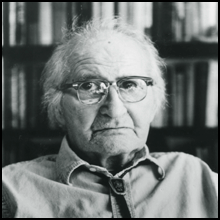
An American gripe: We've asked Henry Roth biographer Steven Kellman to comment on the recent articles in Slate and Harper's that object to the posthumous edits exacted by Willing Davidson on Roth's trove of archived manuscript pages (known as “Batch II”). In an email interview, Kellman, who reviewed An American Type for Bookforum, writes:
“At Slate, Judith Shulevitz complains that An American Type reads too much like a New Yorker writer . . . The truth is that Roth was a New Yorker writer, not simply because two sections from Batch II appeared in the magazine in 2006 or because Willing Davidson, who edited An American Type, was an editor there. Four Roth stories appeared in The New Yorker while its author still lived.”
“In Harper's (registration required) Joshua Cohen perpetuates the myth of [Roth as] a Rip Van Winkle who suffered from 'a wasting mogigraphia lasting more than sixty years.' However, soon after Call It Sleep, Roth signed with Maxwell Perkins to write another novel. Though he produced scarcely one hundred pages of it, he continued writing steadily even after cremating some manuscripts. During the 'silent' decades, he published in the New Yorker, Coronet, Commentary, and The Atlantic.”
“Attacking the narrative economy that Davidson, who added nothing, wrested from the mass of Batch II, [Cohen] the author of the novel Witz, an 800-page labyrinth of densely packed prose, is conducting an argument with himself. Almost every manuscript—posthumous or not—undergoes some editorial ministration before appearing in print. 'Writers must publish and perish,' Cohen concludes, without acknowledging immortality as a motive for much art. 'Manuscripts don’t burn,' wrote Mikhail Bulgakov, whose novel The Master and Margarita was, like Emily Dickinson’s poetry, and Kafka's The Trial (and many others), published posthumously, to commence a glorious afterlife.”
